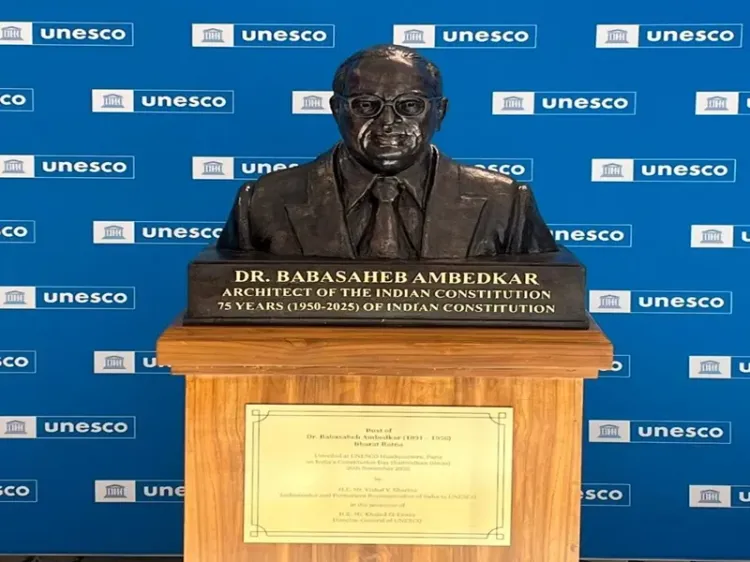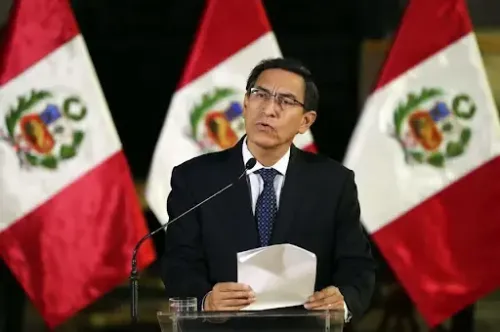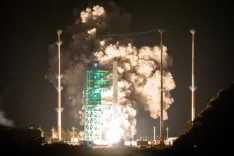Why Did PM Modi Celebrate the Unveiling of BR Ambedkar's Bust at UNESCO?

Synopsis
Key Takeaways
- Prime Minister Modi highlighted the unveiling as a proud moment for India.
- The bust honors Dr. B.R. Ambedkar as a key figure in India's Constitution.
- The installation aligns with UNESCO's values of human rights.
- The bronze sculpture was crafted by Naresh Kumawat.
- This event marks a significant recognition of Ambedkar’s contributions globally.
New Delhi, Nov 26 (NationPress) Prime Minister Narendra Modi expressed his profound joy over the unveiling of a bust of Dr. B.R. Ambedkar at the UNESCO headquarters in Paris, calling it “a matter of great pride” and a suitable international homage to the principal architect of the Indian Constitution.
On this significant occasion of the 75th Constitution Day, he shared on X: “Today, on Constitution Day, we celebrate the unveiling of Dr. Babasaheb Ambedkar’s bust at UNESCO Headquarters in Paris. This is a commendable tribute to Dr. Ambedkar and his invaluable contributions to our Constitution. His philosophies and ideals continue to inspire countless individuals globally.”
The bronze sculpture, crafted by the distinguished artist Naresh Kumawat, was officially inaugurated by Vishal V. Sharma, India’s Permanent Representative to UNESCO, with the esteemed presence of UNESCO Director-General Audrey Azoulay and other high-ranking diplomats.
This ceremony coincided with India's celebration of Samvidhan Divas, commemorating the date in 1949 when the Constituent Assembly adopted the Constitution.
During the event, Ambassador Sharma underscored B.R. Ambedkar’s relentless fight against social discrimination, promoting his vision of equality, justice, liberty, and fraternity—principles that continue to motivate marginalized communities worldwide.
UNESCO acknowledged this installation as a celebration of global human rights and the struggle against caste-based oppression, values that deeply align with the organization’s mission.
The bust is now positioned alongside the statues of iconic figures like Nelson Mandela, Mahatma Gandhi, and Martin Luther King Jr. in UNESCO’s Garden of Peace, marking Dr. Ambedkar as the first Indian leader after Gandhi to receive such an honor in Paris.
Since 2015, when Prime Minister Modi designated November 26 as Constitution Day, the government has consistently promoted Dr. Ambedkar’s legacy on international stages.
This unveiling in Paris follows similar recognitions at the United Nations in New York, the British Parliament, and Columbia University. In congratulating the Indian mission, the Prime Minister remarked that Babasaheb’s life remains a guiding light for billions seeking dignity and equality.
“His philosophies and ideals give strength and hope to countless individuals worldwide,” he reiterated.









